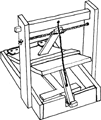Vertebrate Pest Conference Proceedings collection
Date of this Version
March 1992
Document Type
Article
Abstract
We investigated the effectiveness of a coyote (Canis latrans) control program implemented to increase numbers of endangered San Joaquin kit foxes (Vulpes macrotis mutica) at the Naval Petroleum Reserves in California (NPRC). Between 1980 and 1985, the kit fox population on NPRC declined approximately 66% while coyote abundance apparently increased. Coyote predation was identified as the primary cause of mortality for kit foxes. From 1985 to 1990, the U. S. Department of Energy (DOE) sponsored a program to kill coyotes with the objective being to reduce predation on kit foxes and increase fox numbers. Control methods during the first 4 years were limited to trapping, shooting, and denning. In the last 12 months of the program, aerial gunning was implemented and significantly increased control intensity. This more intensive strategy was not conducted for a sufficient length of time to evaluate its effectiveness. Thus, conclusions regarding coyote control at NPRC are based primarily on the first 4 years of the program. During the 5-year effort, 591 coyotes were killed. Although coyote scent-station indices declined during the period of control, the contribution of the control effort to this decline is unclear. Reproductive rates of female coyotes did not exhibit a compensatory increase as is commonly observed when coyote populations are artificially depressed. After control was initiated, kit fox capture indices and survival rates did not increase, and the proportion of fox deaths due to coyotes did not decrease. The number of coyotes removed annually may not have been sufficient to effectively reduce coyote abundance. Kit fox and coyote population trends both were significantly correlated to lagomorph abundance. Thus, food availability probably was the primary factor influencing the population dynamics of both predators. Control efforts were discontinued pending further consideration of the merits of control and its potential efficacy at NPRC.

